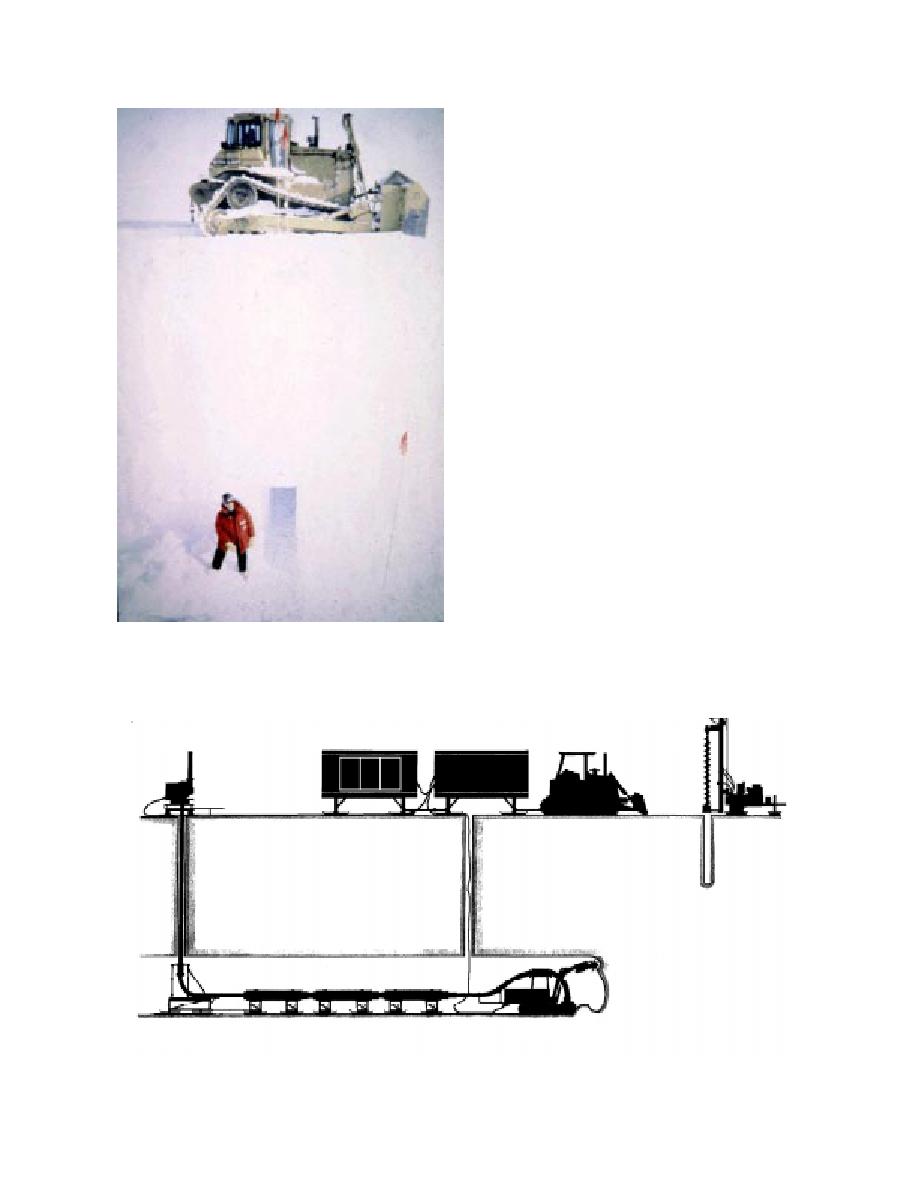
occurred at the location the model predicted fail-
ure would occur. Failure was attributed to lower
snow strength near the surface and higher load-
ing conditions.
A final series of tests used a 1/10-scale model
of the tunnel. These tests, although limited in value
because of their proximity to the surface (0.6 m),
confirmed the data gathered in the previous, half-
scale tests. Catastrophic failure was initiated at twice
the anticipated loading of the full-scale tunnel.
THE SOUTH POLE TUNNELING SYSTEM
The CRREL South Pole Tunneling system
(SPoTs) is composed primarily of five major sub-
systems. These are the tunneler, the chip disposal
system, the surface drill rig, the generator set
(genset) module, and the workshop. The tunneler
and chip disposal subsystems were technically the
most challenging parts of the system and thus will
be discussed in greater detail. These subsystems,
as well as other components of SPoTs, are under
continuous development, as will be seen further
into this report. The descriptions below and fol-
lowing are thus a snapshot of the system at the
time of this report.
System overview
Before going into detail on the system compo-
Figure 6. Scale model tunnel tests at South Pole.
nents, this report will present a brief system over-
view that will help orient the reader. Figure 7
shows how the system is integrated. As can be
Generator Module
Workshop Module
Blower
Drill Rig
Transition Sled
Tunneler
Telescoping Ducts
(conveyor collapsed)
Figure 7. The South Pole Tunneling System (SPoTs).
5




 Previous Page
Previous Page
